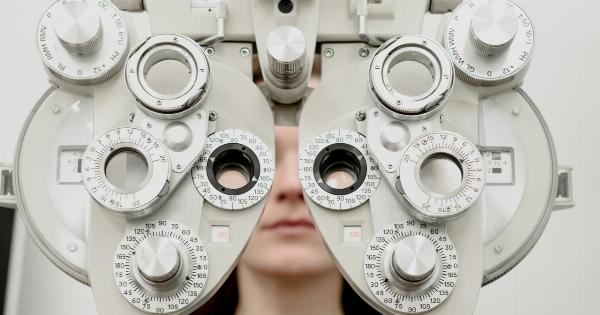Vision is one of the most important senses humans possess. It allows us to navigate the world, appreciate its beauty, and engage with others.
However, for millions of people across the globe, vision loss or impairment poses a significant challenge to their daily lives. Traditional treatments for vision problems have had limited success, but now a groundbreaking field known as gene therapy is emerging as a potential game-changer in the quest to restore vision.
The basics of gene therapy
Gene therapy involves using genetic material to treat or prevent diseases by altering the patient’s genes. The goal is to introduce healthy genes into cells that are affected by mutations, defects, or other abnormalities.
In the context of vision restoration, gene therapy aims to correct genetic mutations that are responsible for various eye diseases, such as retinitis pigmentosa and age-related macular degeneration.
Understanding eye diseases and their impact
Retinitis pigmentosa (RP) is a group of inherited eye disorders that lead to the gradual degradation of photoreceptor cells in the retina. This progressive deterioration ultimately results in severe vision loss or blindness.
Age-related macular degeneration (AMD) primarily affects the macula, the central part of the retina responsible for sharp central vision. As the disease progresses, individuals experience difficulty with activities like reading, driving, and recognizing faces.
The promise of gene therapy in vision restoration
Gene therapy offers new hope for vision restoration by targeting the specific genetic mutations responsible for these eye diseases. The concept involves delivering therapeutic genes into the cells of the retina to compensate for the faulty ones.
Several approaches are currently being explored in preclinical and clinical trials to evaluate the safety and effectiveness of gene therapies.
Gene replacement therapy
One approach to gene therapy for vision restoration involves replacing faulty genes with healthy ones to restore proper cell function. This technique aims to introduce functional copies of the mutated genes into targeted cells.
For example, in individuals affected by RP caused by a genetic mutation in a specific gene, the therapy would involve delivering a working copy of that gene into retinal cells.
Gene editing techniques
Another powerful tool in gene therapy is gene editing, which allows scientists to make precise changes to the DNA sequence.
One commonly used technique is CRISPR-Cas9, which acts as molecular scissors to cut out the defective DNA segment and replace it with the correct sequence. Gene editing holds immense potential for addressing numerous genetic diseases, including those affecting vision.
Optogenetics and vision restoration
Optogenetics is a cutting-edge technique that involves introducing light-sensitive proteins into cells to restore visual function.
In the context of gene therapy, optogenetics can be used to confer light sensitivity to cells that have lost their photoreceptor function. Although still in the early stages of development, optogenetics shows promise for treating RP and other vision-related conditions.
Challenges and ongoing research
While gene therapy holds tremendous potential for vision restoration, several challenges need to be overcome. One hurdle is delivering the therapeutic genes to the appropriate cells in the retina.
Scientists are exploring various methods, including the use of viral vectors or nanoparticles, to efficiently deliver the genetic material without causing adverse side effects.
Another challenge is ensuring the long-term effectiveness and safety of gene therapies.
Clinical trials are currently underway to assess the durability of the treatment and identify any potential risks or complications associated with gene therapy for vision restoration.
The future of gene therapy for vision restoration
The field of gene therapy is rapidly evolving, offering new hope and possibilities for vision restoration.
The development of tailored therapies for specific genetic mutations, combined with advancements in gene editing techniques and delivery methods, holds tremendous potential for helping individuals regain their sight and live more fulfilling lives.
Conclusion
Vision loss affects millions of people worldwide, significantly impacting their quality of life. Gene therapy has emerged as a promising avenue for vision restoration by targeting the underlying genetic causes of eye diseases.
Through gene replacement, editing, and optogenetics techniques, scientists are paving the way for innovative treatments that could bring renewed hope to individuals with vision impairments. While challenges remain, ongoing research and clinical trials hold the key to unlocking the full potential of gene therapy in restoring vision.



























